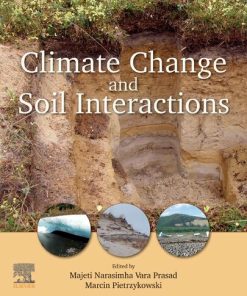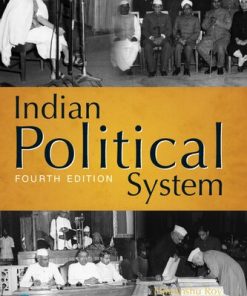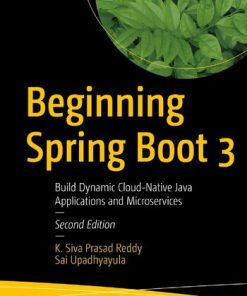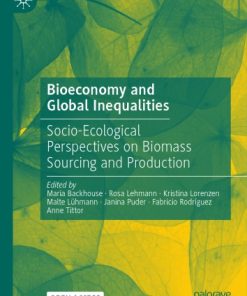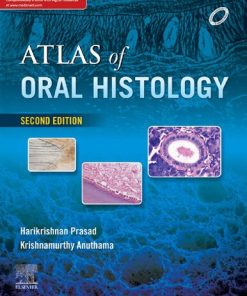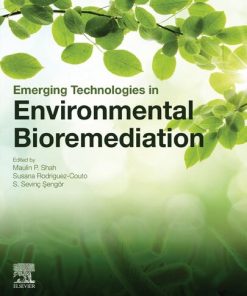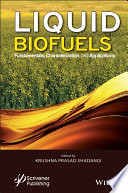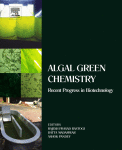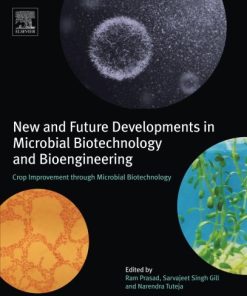(EBook PDF) Bioremediation and Bioeconomy 1st Edition by MNV Prasad 0128028726 9780128028308 9780128028728 full chapters
$50.00 Original price was: $50.00.$25.00Current price is: $25.00.
Bioremediation and Bioeconomy 1st Edition by M.N.V Prasad – Ebook PDF Instant Download/DeliveryISBN: 0128028726, 9780128028308, 9780128028728
Full download Bioremediation and Bioeconomy 1st Edition after payment
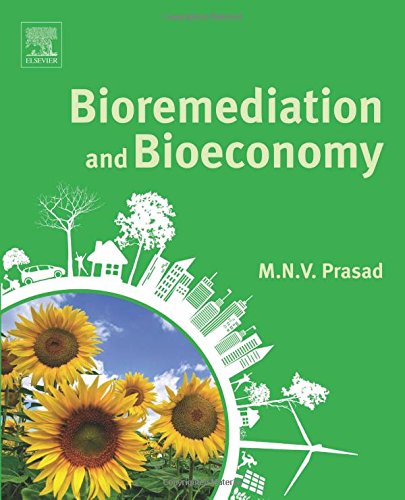
Product details:
ISBN-10 : 0128028726
ISBN-13 : 9780128028308, 9780128028728
Author: M.N.V Prasad
Bioremediation and Bioeconomy provides a common platform for scientists from various backgrounds to find sustainable solutions to environmental issues, including the ever-growing lack of water resources which are under immense pressure due to land degradation, pollution, population explosion, urbanization, and global economic development.
In addition, large amounts of toxic waste have been dispersed in thousands of contaminated sites and bioremediation is emerging as an invaluable tool for environmental clean-up.
Bioremediation and Bioeconomy 1st Table of contents:
Section 1: Bioproducts from Contaminated Substrates (Soil and Water)
Chapter 1: Production of Biodiesel Feedstock from the Trace Element Contaminated Lands in Ukraine
Abstract
Acknowledgments
1 Introduction
2 Monitoring of Heavy Metals Pollution in Ukraine
3 Economical Background of Biodiesel Production in Ukraine and in the World
4 Biodiesel Produced from Oilseed Crops
5 Cleanup of Heavy Metals from Soil by Using Oilseed Crops
6 Conclusions
Chapter 2: Energy Plantations, Medicinal and Aromatic Plants on Contaminated Soil
Abstract
Acknowledgments
1 Introduction
2 Aromatic, Medicinal, and Energy Plants
3 Vetiver and Lemon grass
4 Phytostabilization of Integrated Sponge Iron Plant Waste Dumps by Aromatic Grass-Legume (Lemon-Stylo) Mixture and Energy Plantation (Sesbania)
5 Phytoremediation of Chromite-Asbestos Mine Waste Using Cymbopogon citratus and Chrysopogon zizanioides: A Pot Scale Study
6 Phytostabilization of Copper Tailings Using Cymbopogon citratus and Vetiveria zizanioides: A Pot Scale Study
Chapter 3: Prosopis juliflora (Sw) DC: Potential for Bioremediation and Bioeconomy
Abstract
Acknowledgments
1 Introduction
2 About Prosopis juliflora
3 Global Distribution
4 Restoration of Contaminated/Degraded Land, Phytoremediation
5 Prosopis as Livestock Feed
6 Prosopis for Fuelwood
7 Prosopis for Production of Timber
8 Prosopis for Bioethanol
9 Prosopis for Honey Production
10 Medicinal Uses
11 Natural Persticide (Allelopathy)
12 Prosopis Pods and Seeds Are a Rich Source of Carbohydrate
13 Eecosystem Services: Birds Breeding on Prosopis
Chapter 4: Giant Reed (Arundo donax L.): A Multipurpose Crop Bridging Phytoremediation with Sustainable Bioeconomy
Abstract
1 Introduction
2 Giant Reed (A. donax L.)
3 Production of Giant Reed Irrigated with Wastewaters: Case Studies
4 Production of Giant Reed in Contaminated Soils: Case Studies
5 Benefits and Constraints of Using Giant Reed for Phytoremediation Purposes
6 Conclusions and Recommendations
Section 2: Biomass Energy, Biodiesel, and Biofuel from Contaminated Substrates
Chapter 5: Biomass Energy from Revegetation of Landfill Sites
Abstract
1 Introduction
2 Phytocapping Technology to Manage Landfill Sites
3 Landfill Biomass for Energy Production
4 Technologies for Biomass Conversion to Energy
5 Summary and Conclusion
Chapter 6: Bioenergy from Phytoremediated Phytomass of Aquatic Plants via Gasification
Abstract
Acknowledgments
1 Introduction
2 Aquatic Weeds for Decontamination of Water
3 Biogas Generation from Phytoremediated Biomass of Water Weeds
4 Mechanism of Biogas Generation
5 Cleaning and Upgrading Biogas
6 Factors Influencing Biogas Yield
7 Bioeconomy of Biogas Production
8 Constraints in Biogas Generation from Phytoremediating Aquatic Macrophytes
9 Conclusions
Chapter 7: Jatropha Curcas L. Cultivation on Constrained Land: Exploring the Potential for Economic Growth and Environmental Protection
Abstract
1 Introduction
2 Cultivation and Economic Growth – Value Additions and Value Chain Products
Chapter 8: Potential of Castor Bean (Ricinus Communis L.) for Phytoremediation of Metalliferous Waste Assisted by Plant Growth-Promoting Bacteria: Possible Cogeneration of Economic Products
Abstract
Acknowledgments
1 Introduction
2 Materials and Methods
3 Characterization of Plant Growth-Promoting Bacteria
4 Results and Discussion
5 Growth and Phosphate Solubilization
6 Uptake of Metal by Bacterial Strains
7 Identification of Bacterial Strains
8 Conclusion
Section 3: Ornamentals and Crops for Contaminated Substrates
Chapter 9: Potential of Ornamental Plants for Phytoremediation of Heavy Metals and Income Generation
Abstract
Acknowledgments
1 Introduction
2 Contamination of Heavy Metals and Phytoremediation
3 Ornamental Plants for Heavy Metals Phytoremediation
4 Ornamental Plants for Phytoremediation, Sustainability, and Bioeconomy
5 Management of Phytoremediating Ornamental Biomass
6 Conclusions
Chapter 10: Tree Crops on Abandoned Mines for Environmental Remediation and Industrial Feedstock
Abstract
1 Introduction
2 Trees: From Environmental Remediation to Industrial Feedstock
3 Study Areas
4 Methods
5 Results and Discussion
6 Conclusions
Chapter 11: Rice Paddies for Trace Element Cleanup: Bioeconomic Perspectives
Abstract
1 Introduction
2 Rice Plant as a Phytoremediation Crop
3 Assisted Cleanup Using Rice Plants
4 Rice Industry By-Products for Bioremediation
5 Sustainable Bioremediation Prospects of Rice Paddies
6 Outlook
Chapter 12: Cultivation of Sweet Sorghum on Heavy Metal-Contaminated Soils by Phytoremediation Approach for Production of bioethanol
Abstract
1 Introduction
2 Remediation Measures for HMs
3 Phytoremediation of HMs: Hyperaccumulators
4 Phytoremediation of HMs: Energy Crops
5 Phytoremediation of HMs by Sugar Crops: Sweet Sorghum
6 Sweet Sorghum: A Feedstock for “Sweet Fuel” Bioethanol
7 Microbe-Assisted Phytoremediation
8 Work at ICRISAT
9 Work at Indian NARS
10 Work in Other Countries
11 Future Outlook
Section 4: Brownfield Development for Smart Bioeconomy
Chapter 13: Mulberry and Vetiver for Phytostabilization of Mine Overburden: Cogeneration of Economic Products
Abstract
Acknowledgments
1 Introduction
2 Environmental Issues Associated with Mine Overburdens
3 Risks Associated with Coal Mining Overburden Pollution
4 Coal Mine Overburdens
5 Mulberry Cultivation on Coal Mine Overburden in India
6 Phytostabilization of Mine Waste by Vetiver Grass
7 Vetiver Ecotype and Propagation in Thailand
8 Phytostabilization of Zinc Mine Waste by Vetiver Grass in Thailand
9 Economic Products from Vetiver
10 Conclusions
Chapter 14: Utilization of Contaminated Lands for Cultivation of Dye Producing Plants
Abstract
1 Introduction
2 Historical Background
3 Potential and Future Prospects of Dyeing Plants
4 Sources of Natural Dyeing Plants
5 Experimental Findings
6 Conclusion
Chapter 15: Brownfield Restoration as a Smart Economic Growth Option for Promoting Ecotourism, biodiversity, and Leisure: Two Case Studies in Nord-Pas De Calais
1 Introduction
Case Study 1: Ecological Interests, Restoration and Valuation of Coal Mining Slag Heaps
2 General Description of Study Area
3 Initiative by Établissement Public Foncier
4 Slag Heaps: A Very Special Environment
5 The Edaphic Break Effect
6 The Climatic Break Effect
7 The Topographic Break Effect
8 A Combination of Effects
9 The Agricultural Break Effect
10 An In Situ Laboratory
11 The Creation of Wetlands
12 An Ambitious Program for the Regeneration of Nature and Its Accessibility to the Public
13 Nature Protection
14 Actions for Public Access and Leisure Areas
15 Conclusion
Case Study 2: Environmental Protection and Management of Two Metalliferous Sites
Acknowledgments
1 Introduction
2 Historical Settings
3 Fauna, Flora and Natural Habitats in Polluted Areas
4 Where Does This Particular Flora Come From?
5 Natura 2000 Preservation and Preservation State
6 Protecting a Polluted Area!
7 Scientific Monitoring
8 Conclusion
Chapter 16: Biological Recultivation of Mine Industry Deserts: Facilitating the Formation of Phytocoenosis in the Middle Ural Region, Russia
Abstract
Acknowledgments
1 Introduction
2 The Purpose and Methods of Research
3 Phytocoenosis Formation on Ash Dumps
4 Conclusion
Section 5: Algal Bioproducts, Biofuels, Biorefinery for Business Opportunities
Chapter 17: Phycoremediation and Business Prospects
Abstract
1 Introduction
2 Major Challenges in Algal Biomass Production
3 Phycoremediation
4 World’s First Phycoremediation Plant at Ranipet, India
5 The Technology and Biomass Based Commercially Valuable Products
6 Leather Processing Chemical Industry
7 Effluent from Confectionery Industry
8 Effluent Characteristics
9 Algal Treatment
10 Effluent from Soft Drink Manufacturing Industry
11 Effluent from Textile Dyeing Industries
12 Phycoremediation of Textile Dyeing Effluents
13 Algal Biomass Production in Textile Dyeing Effluent
14 Effluent from Oil Drilling Operations (Offshore and Onshore)
15 Effluent from Detergent Manufacturing Industry
16 Effluent from Electroplating Industry
17 Sewage and Algal Biomass Production
18 Effluent from a Chemical Industry which Produces Organic Acids
19 Conclusions
Chapter 18: Algae-Based Bioremediation: Bioproducts and Biofuels for Biobusiness
Abstract
Acknowledgment
1 Introduction
2 Microalgae for WWT and Xenobiotics Breakdown
3 Heavy Metal Removal by Microalgae
4 Microalgae-Mediated CO2 Mitigation and Flue Gas Treatment
5 Integrated WWT and Algal Cultivation
6 Value Addition to WWT: Algal Biomass Applications
7 Conclusion
Section 6: Bioprocesses, Bioengineering for Boosting Bio-Based Economy
Chapter 19: Building a Bio-Based Economy Through Waste Remediation: Innovation Towards Sustainable Future
Abstract
Acknowledgments
1 Introduction
2 Waste and Energy: A Partnership for a Sustainable Future
3 Value Addition from Waste
4 Bio-Based Economy
5 Future Perspectives
Chapter 20: Energy from Wastewater Treatment
Abstract
1 Introduction
2 Wastewater Treatment
3 Biological Treatment Options
4 Suspended Growth Processes
5 Attached Growth Process
6 Anaerobic Wastewater Treatment Processes
7 Upflow Anaerobic Sludge Blanket Reactors
8 Anaerobic Fluidized Bed Reactors
9 Hybrid Anaerobic Reactor
10 Activated Sludge Process
11 Trickling Filter
12 Downflow Hanging Sponge Reactor
13 Hydrogen Production in Dark Fermentation
14 Microbial Fuel Cells
Chapter 21: Bioprocesses for Waste and Wastewater Remediation for Sustainable Energy
Abstract
1 Introduction to Energy Through Bioremediation
2 Versatile Components of Bioenergy Generation Through Remediation
3 Bioremediation Processes That Generate Energy
4 Energy Generation Through Bioprocess Integrations
5 Future Perspectives
Section 7: Case Studies
Chapter 22: Bioremediation in Brazil: Scope and Challenges to Boost Up the Bioeconomy
Abstract
1 The Bioeconomy in Brazil
2 The Use of Biomass for Environmental Remediation and the Bioeconomy
3 Research on the Use of Biomass for Environmental Remediation in Brazil
4 Regulatory Frameworks Associated with Bioeconomy in Brazil
5 View of the Industrial Sector About Bioeconomy in Brazil
6 Removal of Barriers to Boost Up the Use of Biomass for Bioremediation in Brazil
7 Conclusions
Chapter 23: Phytoremediation of Soil and Groundwater: Economic Benefits Over Traditional Methodologies
Abstract
1 Phytoremediation History
2 Traditional Versus Designed and Constructed Systems
3 Overcoming the Limitations of Phytoremediation
4 Case Histories
Chapter 24: Phytomanagement of Polycyclic Aromatic Hydrocarbons and Heavy Metals-Contaminated Sites in Assam, North Eastern State of India, for Boosting Bioeconomy
Abstract
Acknowledgments
1 Introduction
2 Oil Spills: Causes and Concerns
3 Beneficial Plant-Microbe Interaction in Biodegradation
4 Potential Microbes Boosting Bioeconomy in Rice and Tea
5 Conclusion
Section 8: New Biology
Chapter 25: Ecocatalysis: A New Approach Toward Bioeconomy
Abstract
1 Introduction
2 A New Approach to Multisite and Multiscale Rehabilitation by Phytoextraction
3 From Phytoextraction to Green Chemistry and Vice Versa Through Ecocatalysis
4 Conclusion: Ecocatalysis, a New Vision of Green Chemistry
Chapter 26: Synthetic Biology: An Emerging Field for Developing Economies
Abstract
Acknowledgments
1 Introduction
2 Emerging Trends in Biotechnology Industry and Applied Research
3 Synthetic Biology for Handling Biowaste
4 Advancing Bioremediation Through Systems Biology and Synthetic Biology
5 Perspectives
6 Risk Management of Synthetic Biology Applications
People also search for Bioremediation and Bioeconomy 1st:
what is bioremediation
organisms used in bioremediation
bioremediation and biological augmentation
bioremediation and bioaugmentation
bioremediation and bacteria
Tags:
Bioremediation,Bioeconomy,Prasad,backgrounds,sustainable solutions
You may also like…
Biography & Autobiography - Political
Computers - Programming
Beginning Spring Boot 3 2nd Edition Siva Prasad Reddy Katamreddy
Engineering - Environmental
Biology and other natural sciences - Biotechnology
Science (General)




